Monterey, CA Travel Guide
City on California's Central Coast, founded in 1770, and until the 1950s was an abundant fishery, with present-day attractions including the Monterey Bay Aquarium, Cannery Row, and Fisherman's Wharf
Overview
Monterey is a city located on the southern edge of Monterey Bay on California's Central Coast. Founded on June 3, 1770, it functioned as the capital of Alta California under both Spain (1804 to 1821) and Mexico (1822 to 1836). During this period, Monterey hosted California's first theater, public building, public library, publicly-funded school, printing-press, and newspaper. It was originally the only port of entry for all taxable goods in California. In 1846, during the Mexican-American War of 1846-1848, the United States Flag was raised over the Customs House. After Mexico ceded California to the U.S. at the end of the war, Monterey hosted California's first constitutional convention in 1849.
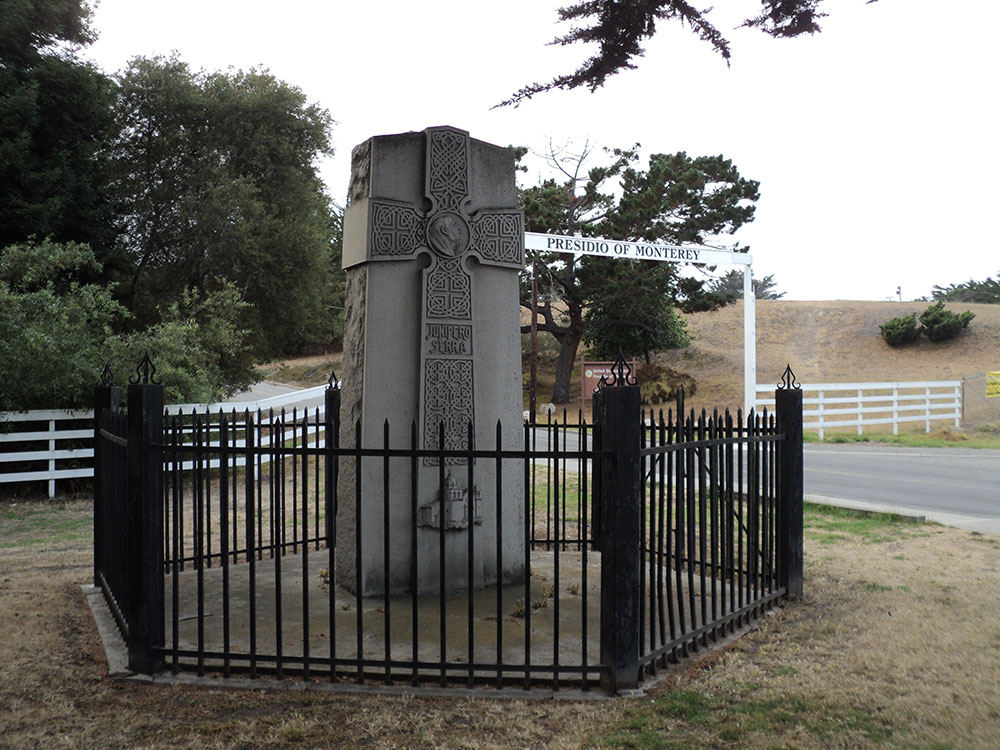
Monterey and the surrounding area have attracted artists since the late 19th-century, and many celebrated painters and writers have lived in the area. Until the 1950s there was an abundant fishery. Monterey's present-day attractions include the Monterey Bay Aquarium, Cannery Row, Fisherman's Wharf, California Roots Music and Arts Festival, and the annual Monterey Jazz Festival.
In 1879 Robert Louis Stevenson spent a short time in Monterey at the French Hotel while writing The Amateur Emigrant, "The Old Pacific Capital," and "Vendetta of the West." The former hotel, now known as the "Stevenson House", stands at 530 Houston Street and features items that belonged to the writer.
In June 1967 the city was the venue of the Monterey Pop Festival. Formally known as the Monterey International Pop Music Festival the three-day concert event was held June 16 to 18, 1967, at the Monterey County Fairgrounds. It was the first widely promoted and heavily attended rock festival, attracting an estimated 200,000 total attendees with 55,000 to 90,000 people present at the event's peak at midnight on Sunday. It was notable as hosting the first major American appearances by Jimi Hendrix and The Who, as well as the first major public performances of Janis Joplin and Otis Redding.
The Monterey Pop Festival embodied the themes of San Francisco as a focal point for the counterculture and is generally regarded as one of the beginnings of the "Summer of Love" in 1967. It also became the template for future music festivals, notably the Woodstock Festival two years later.
Attractions
Monterey is well known for the abundance and diversity of its marine life, which includes sea lions, sea otters, harbor seals, bat rays, kelp forests, pelicans and dolphins and several species of whales. Only a few miles offshore is the Monterey Canyon, the largest and deepest (3.2 km) underwater canyon off the Pacific coast of North America, which grants scientists access to the deep sea within hours. The cornucopia of marine life makes Monterey a popular destination for scuba divers of all abilities ranging from novice to expert. Scuba classes are held at San Carlos State Beach, which has been a favorite with divers since the 1960s. The Monterey Bay Aquarium on Cannery Row is one of the largest aquariums in North America, and several marine science laboratories, including Hopkins Marine Station are located in the area.
Monterey's historic Fisherman's Wharf was constructed in 1845, reconstructed in 1870 and is now a commercial shopping and restaurant district with several whale watching entities operating at the end of its pier.
Monterey's historic Fisherman's Wharf was constructed in 1845, reconstructed in 1870 and is now a commercial shopping and restaurant district with several whale watching entities operating at the end of its pier.
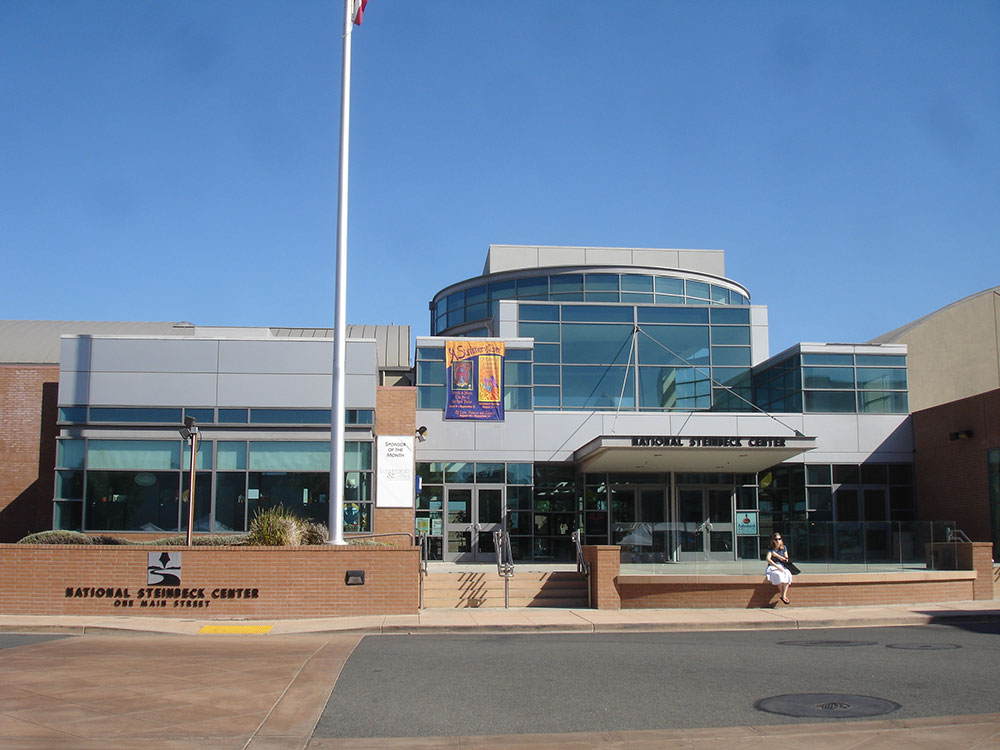 LordHarris, CC BY-SA 3.0, via Wikimedia Commons ; Image Size Adjusted
LordHarris, CC BY-SA 3.0, via Wikimedia Commons ; Image Size AdjustedMonterey is home to several museums and more than thirty carefully preserved historic buildings. Most of these buildings are adobes built in the mid-1800s. Some are museums and open to the public, including the Cooper Molera Adobe, Robert Louis Stevenson House, Casa Serrano, The Perry House, The Customs House, Colton Hall, Mayo Hayes O'Donnell Library and The First Brick House. Many others are only open during Monterey's annual adobe tour. The Monterey Museum of Art specializes in Early California Impressionist painting, photography, and contemporary art.
What may be the only whalebone sidewalk still in existence in the United States lies in front of the Old Whaling Station, left by New England whalers while California was still part of New Spain.
Cannery Row is an historic industrial district west of downtown Monterey. Several companies operated large sardine canneries and packing houses from the 1920s until the 1950s when the sardines were overfished and the industry collapsed. The neighborhood was largely empty from the 1950s until the late 1980s when the Monterey Bay Aquarium bought the former Hovden Cannery and built their aquarium around it. The Aquarium revitalized the neighborhood and it is now the number one tourist destination on the Monterey Peninsula. Several of the canneries burnt down in the 1970s and some of their empty foundations are still visible along the oceanfront. A free shuttle transports visitors between downtown Monterey and the Aquarium.
Once called Ocean View Boulevard, Cannery Row street was renamed in 1953 in honor of writer John Steinbeck, who had written a well-known novel of the same name. It has now become a tourist attraction with numerous establishments located in former cannery buildings, including Cannery Row Antique Mall which is located in the most historically intact cannery building open to the public. Other historical buildings in this district include Wing Chong Market, The American Tin Cannery which is a shopping mall, Doc Rickett's lab, next door to the aquarium and only open to the public a few times a year, and some of the water tanks written about by Steinbeck. A few privately owned and operated fishing companies still exist on Cannery Row, housed on piers located a short distance from the historic district frequented by tourists. Cannery Row is now considered the historic cannery district from Foam St. to the ocean.
Lake El Estero is a popular Monterey park. Recreation opportunities include paddle boats, the Dennis the Menace Park (named after the comics character Dennis the Menace), and a skate park designed by local skaters. Birders are especially fond of this park due to its easy accessibility and the diversity of bird life it attracts.
This article uses material from the Wikipedia article "Monterey, California", which is released under the Creative Commons Attribution-Share-Alike License 3.0
Featured Locations and Trails
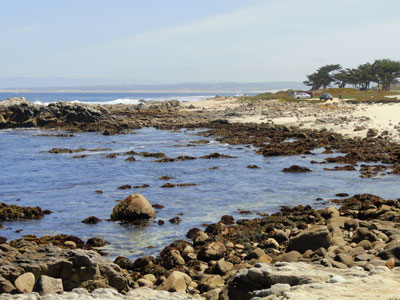
Daderot, CC0, via Wikimedia Commons; Image Size Adjusted
Asilomar State Beach
State park unit providing public access to rocky coast and dune habitat on the Monterey Peninsula

FASTILY, CC BY-SA 4.0, via Wikimedia Commons; Image Size Adjusted
Cannery Row
Waterfront street was the site of a number of now-defunct sardine canning factories
Cathedral of San Carlos Borromeo
Roman Catholic cathedral is the oldest continuously operating parish and the oldest stone building in California
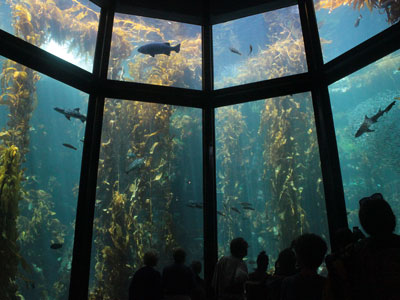
Rhinopias, CC BY-SA 4.0, via Wikimedia Commons; Image Size Adjusted
Monterey Bay Aquarium
Nonprofit public aquarium known for its regional focus on the marine habitats of Monterey Bay, receives two million visitors each year
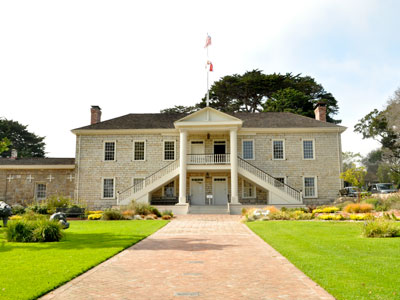
Brigitta J, CC BY-SA 3.0, via Wikimedia Commons; Image Size Adjusted
Monterey State Historic Park
Historic state park in Monterey, California that includes the Monterey Old Town Historic District, a historic district that includes 17 contributing buildings
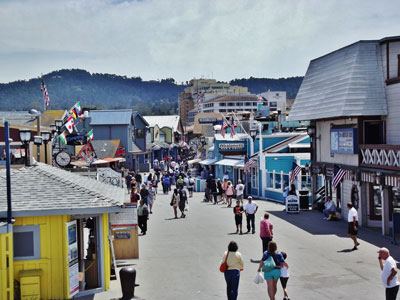
Amadscientist, CC BY-SA 3.0, via Wikimedia Commons; Image Size Adjusted
Old Fisherman's Wharf
Historic wharf used as an active wholesale fish market into the 1960s, eventually becoming a tourist attraction
-400.jpg)
Clotee Pridgen Alloc…, CC BY-SA 3.0, via Wikimedia Commons; Image Size Adjusted
Pebble Beach
Small coastal residential community notable as a resort destination, and the home of Pebble Beach Golf Links
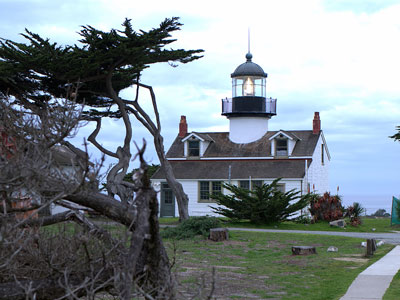
Ed Bierman, CC BY 2.0, via Wikimedia Commons; Image Size Adjusted
Point Pinos Lighthouse
Oldest continuously operating lighthouse on the West Coast
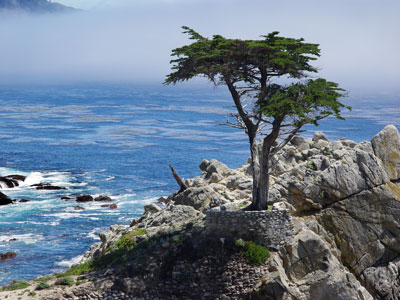
Alexey Potov, CC BY 2.5, via Wikimedia Commons; Image Size Adjusted
17-Mile Drive
Scenic road through Pebble Beach and Pacific Grove, much of which hugs the Pacific coastline and passes famous golf courses, mansions and scenic attractions
 jjron, GFDL 1.2, via Wikimedia Commons; Image Size Adjusted
jjron, GFDL 1.2, via Wikimedia Commons; Image Size Adjusted-1000.jpg) Catalinaschool, CC BY 4.0, via Wikimedia Commons ; Image Size Adjusted
Catalinaschool, CC BY 4.0, via Wikimedia Commons ; Image Size Adjusted_-_panoramio-400.jpg)